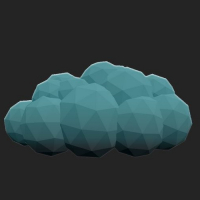Loopy Pro: Create music, your way.
What is Loopy Pro? — Loopy Pro is a powerful, flexible, and intuitive live looper, sampler, clip launcher and DAW for iPhone and iPad. At its core, it allows you to record and layer sounds in real-time to create complex musical arrangements. But it doesn’t stop there—Loopy Pro offers advanced tools to customize your workflow, build dynamic performance setups, and create a seamless connection between instruments, effects, and external gear.
Use it for live looping, sequencing, arranging, mixing, and much more. Whether you're a live performer, a producer, or just experimenting with sound, Loopy Pro helps you take control of your creative process.
Download on the App StoreLoopy Pro is your all-in-one musical toolkit. Try it for free today.
How do CC work?
Hi noob question so bear with me.
How do CC midi thingys work? By that I mean if a AUV3 app like SnakeBud or whatever accepts a pattern change on CC10 do you usually have to also pass in a value, ie send the app “CC10, 7” from “somewhere” (still trying to get to the bottom of that) and the receiving app SnakeBud will change it’s pattern to 7?
This is a kinda follow on to my other thread ( https://forum.audiob.us/discussion/45374/auv3-cc-sequencer#latest )about CC In AUM as really want to automate CC sends
Thanks!



Comments
Keep in mind that AUv3 parameters are a modern replacement for MIDI CC, but I digress.
For starters, here's some Sweetwater to cover the basics:
https://www.sweetwater.com/insync/continuous-controller/
You're specifically asking about sending a pattern change via CC, as opposed to Program Change (PC), which is something different.
On the receiving end, a value of 0 is usually ignored and either a value >0 or a value >63 will trigger the change. To be safe, send 127. Often a press is programmed to send 127 and a depress is programmed to send 0. Then a pattern change will happen on each press.
@NimboStratus yes, you have the gist of it. Midi cc messages contain an id (the cc#) and a value between 0 and 127. From reading through the SnakeBud thread it appears that cc10 should change patterns. The first pattern will probably be selected with the value of zero or one with the other patterns going up from there. You also have to know how the app will respond to the incoming cc (it should mimic how it responds in the ui). Are patterns supposed to change immediately or after the current pattern finishes.
@NimboStratus here’s a quick video of automating ChordBud with StepBud. If SnakeBud is like ChordBud then the cc value will start at 1 for pattern 1. The only thing that I think will be unclear is the long-press on the step# to bring up the edit window in order to disable notes being sent.
Think of MIDI CC's as simply a combination of three values: MIDI Channel, CC#, and CC Value. That part is easy enough. You can send those three values from a controller with knobs, or from an app that can send CC values, or from hardware. It doesn't matter where it comes from, it's all just a series of values.
Next is the receiver of those values and what it does with them. That varies from app to app and also has the added option of AU parameter automation. So, to pick it apart...
Understanding which of those methods you're using at any one time is key to figuring out how things need to be wired together. Also, understanding that all apps vary in their midi/parameter implementations is important.
Thanks all that Really helps ❤️
Excellent teaching, as always.
This is brilliant. I spent a day trying to work out how to achieve a result you demonstrated in under 5 minutes. Brilliant works a treat. Thank you.